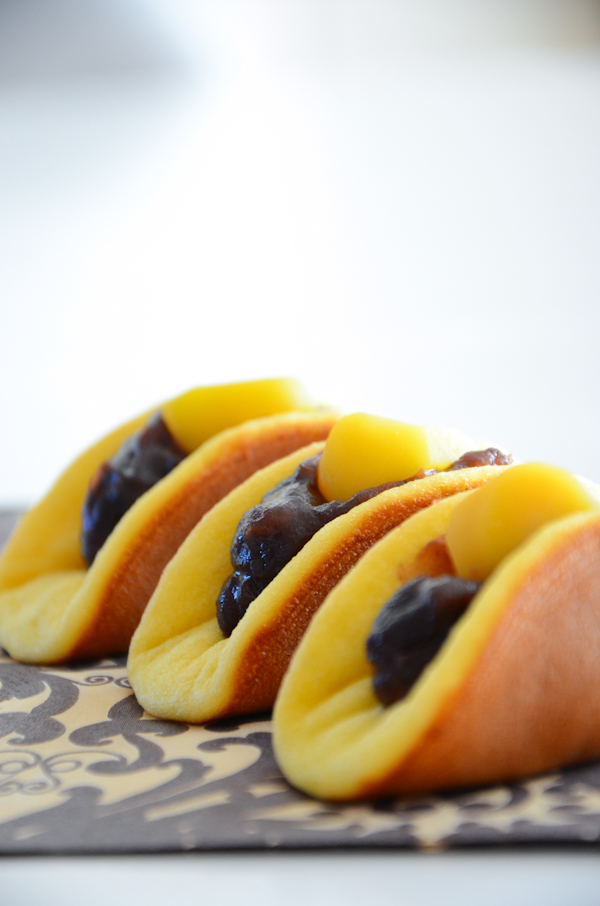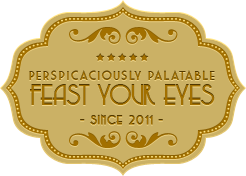
A lot of Japanese desserts tend to be squishy. “Squishy” is not an inviting word to describe something edible, nor the term “glutinous”. Traditional Japanese desserts are just that: sticky, chewy, or mushy such as ohagi (glutinous rice cakes) and kurikinton (pureed sweet potato with candied chestnuts). But picture perfect, nevertheless. The Japanese always eat with their eyes as well as their mouths. This makes the preparation of the common Japanese desserts tedious and meticulous, much like creating works of art.
One of the few Japanese desserts I love, and not to mention an exception to the description “sticky,” is castella. It is a Japanese sponge cake made typically from flour, sugar, eggs, and starch syrup. History indicates that Portuguese merchants introduced this dessert in the 16th century and it was called Pão de Castela, which means “bread from Castile.” It is known to be the specialty of Nagasaki. Although it may look simple, its aroma, moist and fluffy appearance, and classic golden brown top are quite inviting.
Today, the castella is known as the Japanese sponge cake and is hailed worldwide. There are several variations to the castella with Western influences such as chocolate, cheese and black sugar compared to the more Japanese matcha castella.
There are several versions of the castella all around the world. In France, it is known as Pain d'Espagne, in Turkey it’s Pandispanya, in Portugal it’s Pão de Espanha, and so on and so forth. I think the adaption of the Marron Glacé (candied chestnuts) is the West meets East version that adds a sublime taste to any dessert.
I’m not a huge fan of sugary adzuki (bean paste), but I do love
Marron Glacé, (Candied Chestnuts) aside from mochi and red bean soup (Zenzai). But hey, they look good and also photograph well. I love to put some raw cream on the top. While this feature is not one of my favorites, tastes are entirely subjective. Would anyone out there die for a dorayaki? I thought not!
I like to use a Castella (or English Madeira Cake Recipe which is very close to the Japanese Castella Cake), and cook the mix as you would a pancake, it yields are much more buttery and delicious results, below is a typical Dorayaki Recipe.
Adapted From: Cook it Simply
Ingredients
makes 12 slices
175 g (6 oz) butter
175 g (6 oz) caster sugar
5 ml (1 tsp) vanilla essence
3 eggs
100 g (4 oz) plain flour
100 g (4 oz) self-raising flour
about 15 - 30 ml (1 - 2 tbsp) fresh milk
2-3 thin slices of citron peel
Method
1. Grease and line a deep 18 cm (7 inch) round cake tin. If you are making Dorayaki, you would skip this step, and cook the batter as you would a pancake.
2. Cream the butter and sugar with the vanilla essence until pale and fluffy, then gradually beat in the eggs. Sift the two flours together and fold into the creamed mixture, adding a little milk if necessary to give a dropping consistency.
3. Turn into the prepared tin and bake at 180°C (350°F) mark 4 for 20 minutes. Arrange the citron slices across the top of the cake and return it to the oven for a further 40 minutes or until well risen and firm to the touch. Turn out and cool on a wire rack. Notes: You can use half and half for the cake and the other half to make the Dorayaki.
Typical Dorayaki Recipe
Recipe From: Cookpad
Rice flour confectionery 90 g
Baking powder 1 tsp.
Eggs (M) Two
sugar 1 tbsp.
Honey 1 tbsp.
Mirin 1 tbsp.
Oil 1 tbsp.
Bean marmalade 2 × 7 tbsp.
Whip all the ingredients together and place the mix, using a ladle to get a perfectly shaped pancake into a non-stick pan, cook as you would a pancake.
 A lot of Japanese desserts tend to be squishy. “Squishy” is not an inviting word to describe something edible, nor the term “glutinous”. Traditional Japanese desserts are just that: sticky, chewy, or mushy such as ohagi (glutinous rice cakes) and kurikinton (pureed sweet potato with candied chestnuts). But picture perfect, nevertheless. The Japanese always eat with their eyes as well as their mouths. This makes the preparation of the common Japanese desserts tedious and meticulous, much like creating works of art.
One of the few Japanese desserts I love, and not to mention an exception to the description “sticky,” is castella. It is a Japanese sponge cake made typically from flour, sugar, eggs, and starch syrup. History indicates that Portuguese merchants introduced this dessert in the 16th century and it was called Pão de Castela, which means “bread from Castile.” It is known to be the specialty of Nagasaki. Although it may look simple, its aroma, moist and fluffy appearance, and classic golden brown top are quite inviting.
Today, the castella is known as the Japanese sponge cake and is hailed worldwide. There are several variations to the castella with Western influences such as chocolate, cheese and black sugar compared to the more Japanese matcha castella.
There are several versions of the castella all around the world. In France, it is known as Pain d'Espagne, in Turkey it’s Pandispanya, in Portugal it’s Pão de Espanha, and so on and so forth. I think the adaption of the Marron Glacé (candied chestnuts) is the West meets East version that adds a sublime taste to any dessert.
I’m not a huge fan of sugary adzuki (bean paste), but I do love Marron Glacé, (Candied Chestnuts) aside from mochi and red bean soup (Zenzai). But hey, they look good and also photograph well. I love to put some raw cream on the top. While this feature is not one of my favorites, tastes are entirely subjective. Would anyone out there die for a dorayaki? I thought not!
A lot of Japanese desserts tend to be squishy. “Squishy” is not an inviting word to describe something edible, nor the term “glutinous”. Traditional Japanese desserts are just that: sticky, chewy, or mushy such as ohagi (glutinous rice cakes) and kurikinton (pureed sweet potato with candied chestnuts). But picture perfect, nevertheless. The Japanese always eat with their eyes as well as their mouths. This makes the preparation of the common Japanese desserts tedious and meticulous, much like creating works of art.
One of the few Japanese desserts I love, and not to mention an exception to the description “sticky,” is castella. It is a Japanese sponge cake made typically from flour, sugar, eggs, and starch syrup. History indicates that Portuguese merchants introduced this dessert in the 16th century and it was called Pão de Castela, which means “bread from Castile.” It is known to be the specialty of Nagasaki. Although it may look simple, its aroma, moist and fluffy appearance, and classic golden brown top are quite inviting.
Today, the castella is known as the Japanese sponge cake and is hailed worldwide. There are several variations to the castella with Western influences such as chocolate, cheese and black sugar compared to the more Japanese matcha castella.
There are several versions of the castella all around the world. In France, it is known as Pain d'Espagne, in Turkey it’s Pandispanya, in Portugal it’s Pão de Espanha, and so on and so forth. I think the adaption of the Marron Glacé (candied chestnuts) is the West meets East version that adds a sublime taste to any dessert.
I’m not a huge fan of sugary adzuki (bean paste), but I do love Marron Glacé, (Candied Chestnuts) aside from mochi and red bean soup (Zenzai). But hey, they look good and also photograph well. I love to put some raw cream on the top. While this feature is not one of my favorites, tastes are entirely subjective. Would anyone out there die for a dorayaki? I thought not!







Baltic Maid
January 16, 2012 at 3:25 pm //
This looks absolutely delicious! Beautiful picture! I have been wanting to try a Japanese recipe for a while, I think I just found one.
myfudo
January 17, 2012 at 7:34 am //
Thank you Baltic Maid! Please let me know how the recipe turns out for you? Thank you so much for commenting too.
Bam's Kitchen
January 16, 2012 at 7:01 pm //
I loved eating these in sogo department store in Yokohama. However, you make it seem so easy. Beautiful photos that come out and wet your taste buds. Arigato gozarimashita!
myfudo
January 17, 2012 at 7:36 am //
Hi Bam’s Kitchen, Ah, you’ve been to Japan, I Hope you enjoyed your visit? Thank you so much.
Rochelle (@AcquiredLife)
January 16, 2012 at 7:55 pm //
The Portuguese are very fond of their eggs and sugar desserts. They also brought quite a bit of their culture to Japan. I’m glad to see that the Japanese have found a way to turn this into their own over the centuries :) They look absolutely delicious!
myfudo
January 17, 2012 at 7:38 am //
The did indeed Rochelle, there are some many western influences in Japan, but espeically Portuguese Cuisine. It’s quite lovely, I like the original Portuguese recipe, one yields are more cake like result than the typical Dorayaki recipe. Thank you so much for commenting.
Vivienne
January 16, 2012 at 8:49 pm //
wow!! so impressive :) im a huge fan of castella but they are not easy to make for me! loved how u use it to make dorayaki..another one of those jap desserts i cant get enough of :) that photo looks like its from a magazine – amazing! good work :)
myfudo
January 21, 2012 at 1:51 pm //
Thank you Vivienne, that is such a lovely compliment, I say give the Castella another try, I like it on its own, but as a pancake, all the better “wink”.
Kiri W.
January 17, 2012 at 3:21 am //
Oooh, I had these in japan, they were wonderful! I’ve never had an issue with glutinous/sticky/jelly Asian desserts, and would love to try and make these, I am always intimidated by the amount of work required for many of these desserts!
Shumaila
January 17, 2012 at 10:51 am //
Yumm. This looks so good. A very inviting click of the castella. Never had them before but surely tempted to now!
myfudo
January 21, 2012 at 1:50 pm //
Thank you Shumaila, the Castella is really lovely on its own, but I love the addition of Marron or Whipped Topping.
Lacy
January 20, 2012 at 3:05 am //
I’ve never seen or heard of this dessert before but I think I’m in love with it now. Sounds amazing! Your pictures & the descriptions are definitely making me drool. YUM!
myfudo
January 21, 2012 at 1:50 pm //
Hi Lacy, Thank you so much for the wonderful compliment, I hope you have a chance to try the Castella recipe = )
Amy
January 21, 2012 at 11:48 am //
These sound delicious, and they are lovely! I have never seen anything of this sort, but I love to try new desserts :)!
myfudo
January 21, 2012 at 1:49 pm //
Thank you Amy, I hope you have a chance to give it a try, the Castella is wonderful on its own too.